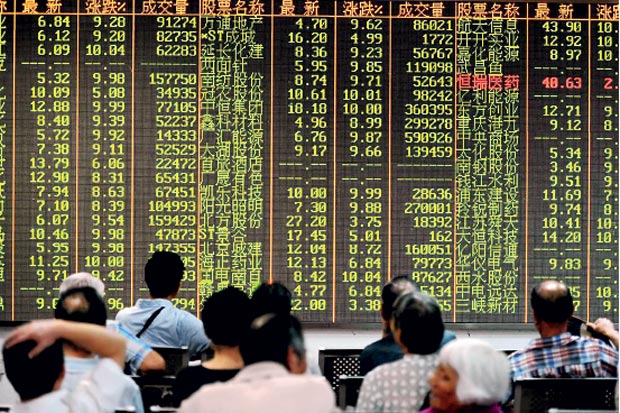Reply To:
Name - Reply Comment

BY David Nellor
Proposals for an Asian Monetary Fund (AMF) dominated corridor conversations at the 1997 International Monetary Fund (IMF)–World Bank annual meetings in Hong Kong. The Asian financial crisis had erupted a few months earlier and was engulfing the region.
The United States vetoed the idea, framing the proposal as the ‘IMF versus AMF’ where any type of AMF would undermine the IMF’s central role in the global financial system. Twenty years on, the circle has been closed, with the IMF launching a framework for collaborative action with regional arrangements.
Arguably, at that early stage of the crisis, the US position was not unreasonable. The mood of Asian finance officials was one of denial. Set against the backdrop of the Asian miracle, it was inconceivable, they thought, that self-inflicted policy distortions — quasi-fixed exchange rates combined with independent monetary policy — as well as compromised financial sector supervision helped drive the crisis. The idea of unconditional financing — not tied to reform — that would avoid reform was, they thought, a defendable proposition.
Still, the push for an AMF did suggest gaps in the global and regional financial architecture. What followed was a struggling ASEAN seeking to catch up, stop gap consultative groups like the Manila Framework Group, and a sequence of ad hoc parallel financing arrangements from the ‘Friends of Thailand’ to Indonesia’s so-called ‘second line of defence’.
The crisis broke on July 2, 1997. By late July, plans led by Japan and in cooperation with the IMF were underway for a regionally based meeting on Thailand. This informal grouping hosted by Japan in Tokyo on August 11, became the ‘Friends of Thailand’. The concrete outcome of the meeting was a series of financial commitments by seven countries and the multilaterals, with the United States notably absent. The absence of the United States was perhaps shaped by congressional dissatisfaction with the Clinton Administration’s financial support of Mexico, which had been provided directly by the US Treasury without congressional approval during Mexico’s 1994 crisis.
Almost remarkably, this rushed US $ 17.2 billion collaborative financing arrangement was the regional success story from a sequence of ad hoc efforts to provide funding to mitigate the consequences of the crisis. The support was structured as a series of bilateral arrangements between Thailand and each country. Each drawing under these agreements was triggered in parallel with Thailand’s drawings under the IMF supported programme. Commitments were credible as they were both conditional and fulfilled step by step.
By contrast, Indonesia’s more than US $ 40 billion package — including an US $ 18 billion ‘second line of defence’ through bilateral support — failed. The enormous scale of the funding, especially at that time, was intended to be a ‘shock and awe’ approach signalling to financial markets that stability was assured.
Some thought the second line would never need to be drawn and perhaps commitments were made with that expectation. But markets saw through this and in short order sufficient questions arose about the willingness of countries to follow through on commitments. This triggered uncertainty at best and arguably made the situation worse.
The South Korean experience of international support was different. The concentration of external debt through the South Korean banking system enabled the coordination of a relatively effective capital control mechanism, creating a window to develop a market-based debt restructuring in the first half of 1998. Here the US Federal Reserve played a leading role, along with other central banks, supported by the technical contributions of the IMF and South Korean officials.
Asia’s leaders were unanimous in supportive statements about the need for a regional crisis response mechanism including funding. Yet there were issues that continue to pose a challenge for the credibility of arrangements, such as the ASEAN+3 Chiang Mai Initiative, today. Lee Kuan Yew, while not opposed to an AMF, cautioned that such an arrangement would need to do more than provide funding that might enable crisis countries to avoid essential reform. He went on, ‘I do not see any Asian group of governments in the AMF strong enough to tell … President Suharto, “You will do this or we will not support you”. If you don’t say that and you support him, that’s money down the drain’.
The Manila Framework Group was established in a November 1997 meeting as the direct result of the failed AMF discussions in Hong Kong. It would serve as a surveillance forum of 14 APEC economies meeting regularly and on an ad hoc basis through to the end of 2004. It played an important role by, for example, triggering a June 1998 Tokyo meeting with the G7 to respond to destabilising global currency moves. The G20 would also start in the aftermath of the Asian financial crisis.
ASEAN was a participant but not a driver when the crisis broke. Its most concrete response came a few years later when, along with the ASEAN+3 countries, the Chiang Mai Initiative was launched in 2000. It was a modest first step especially as operational modalities remained to be defined for at least a decade and only in 2016 was there a ‘dry run’ to test the Chiang Mai Initiative’s capacity to respond to crisis.
Indonesia’s hastily developed Deferred Drawdown Option, with multilateral and bilateral support during the Global Financial Crisis, was another ad hoc instrument showing that gaps in the regional financial architecture persisted well into the 2000s.
Twenty years on, the IMF has spelled out plans for how to make the global financial safety net more effective through collaboration with regional financial arrangements — an outcome that seemed remarkably distant in the midst of the Asian financial crisis.
(Courtesy East Asia Forum)
(David Nellor is a Jakarta-based consultant. He was based in Asia for the IMF throughout the Asian financial crisis and participated in discussions on regional arrangements)